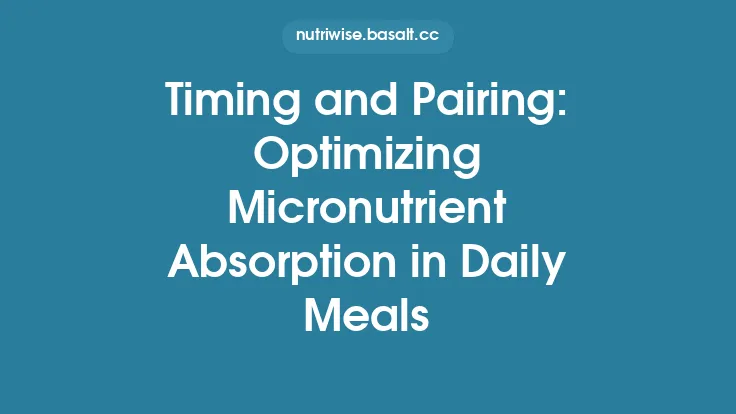Balancing the rhythms of daily life with the cadence of spiritual practice has long been a cornerstone of many cultures. In countless traditions, the moment a meal is taken is as significant as the food itself, weaving together belief, community, and the natural world. By situating nourishment within a sacred temporal framework, societies have created a powerful conduit through which the body can honor the spirit, and vice‑versa. This article explores how various cultures time their meals within ritual contexts, the symbolic logic that underpins those choices, and practical considerations for preserving these practices today.
Historical Roots of Meal Timing in Spiritual Traditions
The deliberate scheduling of meals is not a modern invention; archaeological evidence and early textual sources reveal that ancient peoples already recognized the potency of “when” as much as “what.” In Mesopotamian temple complexes, for instance, offerings of barley and dates were presented at dawn to greet the sun deity Shamash, while evening libations honored the moon god Sin. Similarly, early Vedic hymns prescribe specific times for the consumption of soma, a ritual drink, aligning its intake with the transition from twilight to night.
These early patterns emerged from a shared worldview: time itself was a living, divine force. By aligning eating moments with celestial events, communities expressed reverence for the cosmos and reinforced the belief that human actions could harmonize with cosmic order. Over millennia, these temporal prescriptions evolved into codified ritual calendars that continue to guide contemporary practice.
Aligning with Natural Cycles – Sun, Moon, and Seasons
Many spiritual systems anchor meal timing to observable natural cycles, creating a rhythm that mirrors the environment.
- Solar Alignment – In agrarian societies, sunrise often marks the start of a day’s work and is accompanied by a modest breakfast that serves both practical and symbolic purposes. The first light is seen as a renewal, and the act of eating at this moment is a gesture of gratitude to the sun’s life‑giving energy. Conversely, the setting sun signals the close of daily labor, prompting a larger communal dinner that celebrates the day’s completion and the promise of rest.
- Lunar Alignment – Lunar calendars dominate the ritual timing of many traditions. The waxing and waning of the moon dictate not only festival dates but also the timing of specific meals. For example, in certain East Asian Buddhist monasteries, the full moon is marked by a ceremonial “moon‑cake” offering, consumed after a period of abstention that mirrors the moon’s cycle of illumination and darkness.
- Seasonal Alignment – Seasonal transitions are often marked by feasts that both celebrate the change and prepare participants for the forthcoming period. In the Andean highlands, the winter solstice is observed with a communal stew prepared at the exact moment the sun reaches its lowest point, symbolizing the community’s collective hope for the sun’s return.
These alignments reinforce a sense of belonging to a larger ecological and cosmic order, reminding participants that their bodies are part of a broader, interdependent system.
Ritual Calendars and Fixed Meal Times
Beyond natural cycles, many traditions employ intricate ritual calendars that prescribe exact times for meals within liturgical frameworks.
- Fixed Liturgical Hours – In the Eastern Orthodox Church, the “Divine Liturgy” is preceded by a “pre‑liturgy” meal taken at a specific hour, often after the “First Hour” (approximately 6 a.m.). This timing is intended to prepare the faithful physically and spiritually for the upcoming worship.
- Festival Timetables – Hindu festivals such as Navaratri feature a sequence of meals that correspond to each day’s deity focus. The first day’s “prasad” is offered at sunrise, while the final day’s “abhisheka” (ritual bathing) is followed by a communal feast at sunset, each moment carefully choreographed to reflect the narrative arc of the celebration.
- Observance Periods – In the Jewish tradition, the Sabbath (Shabbat) begins with a candle‑lighting ceremony at sunset on Friday, immediately followed by a festive meal. The timing is not arbitrary; it marks the transition from the ordinary week to a sanctified time, with the first bite symbolizing entry into the holy space.
These calendars function as temporal scaffolding, ensuring that the act of eating is woven seamlessly into the broader tapestry of worship and communal identity.
Symbolic Sequences and Order of Consumption
The order in which foods are presented and consumed often carries layered meaning, turning a simple act of eating into a narrative performance.
- Progression from Simple to Sacred – Many rituals begin with humble staples—such as rice, bread, or water—before moving to more elaborate dishes. This progression mirrors a spiritual journey from the mundane to the divine, reinforcing the notion that the sacred can be accessed through ordinary means.
- Directional Consumption – In certain Tibetan Buddhist ceremonies, participants eat from the right side of the plate first, symbolizing the “right path” of enlightenment. The left side is reserved for later consumption, representing the integration of wisdom and compassion.
- Reciprocal Offering – In many Indigenous North American traditions, the first mouthful of a communal stew is offered silently to the ancestors before the individual partakes. This act acknowledges the lineage that sustains the community and reaffirms the reciprocal relationship between the living and the departed.
These symbolic sequences transform the meal into a living text, where each bite contributes to a larger theological or cosmological story.
Communal Synchrony and the Social Dimension
Timing meals in unison cultivates a palpable sense of unity. When a group eats together at a prescribed moment, the shared rhythm reinforces collective identity and mutual responsibility.
- Collective Pause – The moment of silence before a ritual meal serves as a communal pause, allowing participants to align their inner states with the external ceremony. This pause is often timed precisely—e.g., after the ringing of a bell or the chanting of a mantra—creating a shared temporal anchor.
- Coordinated Preparation – In many monastic settings, the kitchen staff and the worshippers synchronize their schedules so that the final dish is presented exactly at the moment the liturgy concludes. This coordination requires meticulous planning and reinforces the interdependence of all participants.
- Temporal Equality – Fixed meal times can also serve egalitarian purposes. By mandating that all members, regardless of status, sit together at the same moment, the ritual dissolves hierarchical boundaries, at least temporarily, fostering a sense of spiritual equality.
The social fabric of a community is thus reinforced through the disciplined timing of shared nourishment.
The Role of Sacred Space and Preparation Timing
The physical environment in which a ritual meal occurs is often consecrated, and the timing of its preparation is integral to maintaining that sanctity.
- Sanctified Kitchens – In many temple complexes, the kitchen itself is considered a sacred space, with specific hours designated for cooking. For example, in Balinese Hindu temples, the “banten” (offering) kitchen is only active during the “purnama” (full moon) night, ensuring that the food prepared carries the moon’s purity.
- Ritual Cleansing – Prior to the designated meal time, participants may engage in ablution or incense burning, purifying both body and space. The timing of these cleansing acts is synchronized with the meal to create a seamless transition from purification to consumption.
- Temporal Markers in Architecture – Some sacred halls feature architectural cues—such as a sun‑aligned window—that illuminate the altar precisely at the moment a meal is to be offered. This interplay of light and time underscores the belief that the physical environment itself participates in the ritual.
By embedding timing within the very architecture and preparation processes, the meal becomes an extension of the sacred space rather than a separate activity.
Case Studies Across Cultures
Hindu Prasad Timing
In many Hindu temples, “prasad” (blessed food) is prepared during the “muhurat”—a specific auspicious time calculated using astrological charts. The preparation begins minutes before the designated moment, and the offering is presented to the deity exactly at the calculated time. Devotees then receive the prasad immediately after the deity’s “darshan,” reinforcing the belief that the food has been sanctified at that precise instant.
Islamic Iftar and Suhoor
During Ramadan, the daily fast is broken at sunset (iftar) and resumed before dawn (suhoor). The timing is dictated by the call to prayer (adhan) that marks the exact moment of sunset and the pre‑dawn light. While the physiological aspects of fasting are well documented, the ritual significance lies in the communal gathering at these moments, symbolizing humility, gratitude, and solidarity.
Jewish Shabbat Meals
The onset of Shabbat is marked by candle lighting at sunset on Friday, followed immediately by a festive meal. The first blessing over the wine (kiddush) is recited precisely after the candles are lit, and the first bite of challah is taken only after the blessing. This strict sequencing underscores the transition from the profane workweek to the sanctified Sabbath.
Buddhist Monastic Alms
In Theravada Buddhist monasteries, monks receive alms (pindapāta) at a fixed hour each morning, typically just before sunrise. The timing aligns with the monks’ pre‑dawn meditation, allowing the act of receiving food to be an extension of their contemplative practice. Lay supporters present the food at the designated time, reinforcing the reciprocal relationship between monastic and lay communities.
Indigenous Sunrise Feasts
Among the Māori of New Zealand, the “Matariki” (star rise) celebration includes a sunrise feast where the first food is offered to the ancestors as the first light appears. The timing is crucial; the offering must coincide with the appearance of the Matariki star cluster, symbolizing renewal and the cyclical nature of life.
These case studies illustrate how diverse cultures embed temporal precision into their ritual meals, each reflecting unique theological and cosmological frameworks.
Practical Guidelines for Modern Practitioners
- Identify the Sacred Calendar – Determine the liturgical or seasonal calendar that governs your tradition. Use reliable sources (e.g., community elders, religious texts) to pinpoint the exact times for meals.
- Synchronize with Natural Indicators – Where possible, align meal times with observable phenomena such as sunrise, sunset, or moon phases. Simple tools like a sunrise‑sunset calculator or a lunar phase app can aid accuracy.
- Create a Ritual Timeline – Draft a step‑by‑step schedule that includes preparatory actions (e.g., cleansing, lighting candles), the moment of offering, and the communal eating. Visual timelines help participants internalize the sequence.
- Designate Sacred Space – Choose a location that holds spiritual significance, and prepare it in advance. If a dedicated kitchen is unavailable, consecrate the cooking area through a brief ritual before beginning preparation.
- Engage the Community – Communicate the timing clearly to all participants, emphasizing the collective nature of the act. Use reminders (e.g., a bell, a chime, or a digital alert) to ensure synchronicity.
- Respect the Order of Consumption – Follow the prescribed sequence of dishes or portions, acknowledging the symbolic meanings attached to each. If the tradition calls for a silent first bite, honor that silence.
- Adapt with Sensitivity – When modern constraints (e.g., work schedules, time zones) interfere, seek guidance from knowledgeable authorities on permissible adjustments that retain the ritual’s integrity.
By adhering to these guidelines, contemporary practitioners can preserve the temporal sanctity of their meals while navigating the demands of modern life.
Preserving the Balance – Continuity and Adaptation
The timing of meals within spiritual rituals is a living tradition, constantly negotiating between preservation and evolution. While the core principle—that the moment of nourishment can be a conduit for divine connection—remains unchanged, the mechanisms for marking that moment may shift. Digital timekeeping, global diaspora communities, and interfaith dialogue all introduce new variables.
Nevertheless, the essence of the practice endures when communities remain attentive to three pillars:
- Temporal Intentionality – The conscious decision to align eating with a sacred moment.
- Symbolic Cohesion – Maintaining the narrative and symbolic logic that gives the timing its meaning.
- Communal Resonance – Ensuring that the timing fosters a shared sense of belonging and purpose.
When these pillars are upheld, the ancient art of timing meals in spiritual rituals continues to serve as a bridge between body and spirit, grounding the individual within a timeless communal rhythm.
By exploring the historical foundations, natural alignments, ritual calendars, symbolic sequences, and communal dynamics that shape meal timing, we gain a richer appreciation for how cultures worldwide have woven nourishment into the fabric of their spiritual lives. This understanding not only honors the past but also equips contemporary seekers with the insight needed to sustain these practices for generations to come.





